Engine type Turboprop | ||
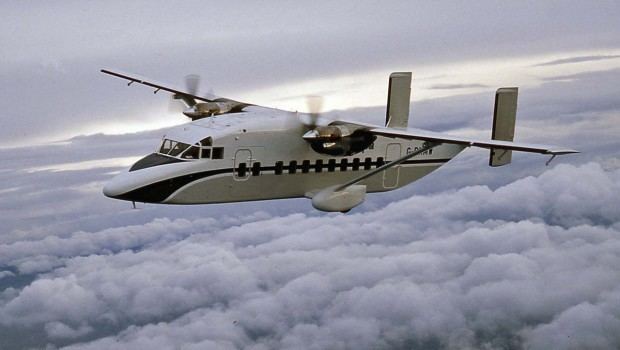 | ||
Short c 23 sherpa aircraft transporting mre s for oklahoma tornado relief aiirsource
The Short C-23 Sherpa is a small military transport aircraft built by Short Brothers. The C-23A and C-23B are variants of the Short 330 and the C-23B+ is a variant of the Short 360.
Contents
- Short c 23 sherpa aircraft transporting mre s for oklahoma tornado relief aiirsource
- Design and development
- US Air Force
- US Army
- Civilian and Air National Guard service
- Variants
- Civil operators
- Aircraft on display
- C 23A
- C 23BC
- References

Design and development
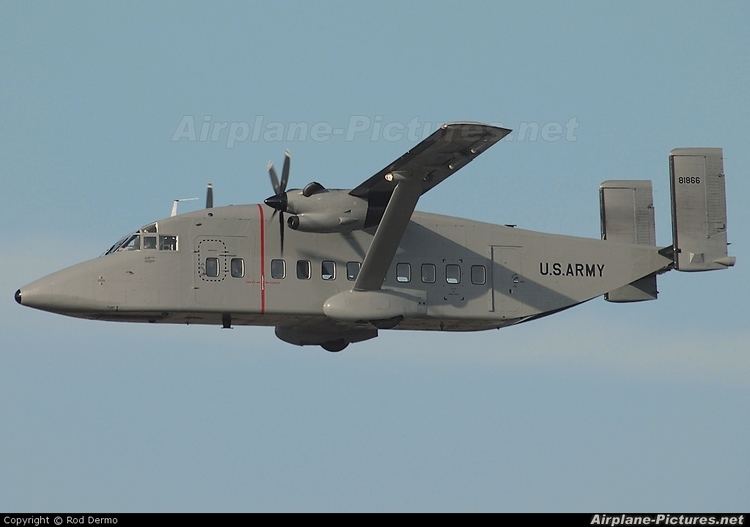
The Short 330 was developed by Short Brothers of Belfast from their earlier Short Skyvan STOL utility transport. The 330 had a longer wingspan and fuselage than the Skyvan, while retaining the Skyvan's square shaped fuselage cross section, allowing it to carry up to 30 passengers while retaining good short field characteristics. The 330 entered commercial service in 1976.
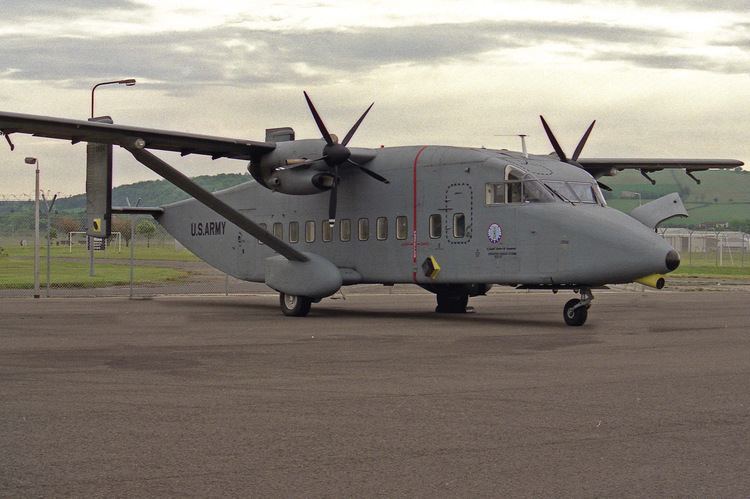
In addition to the passenger aircraft, Shorts also planned two freight versions. The Short 330-UTT (for Utility Tactical Transport) was a military transport version fitted with a strengthened cabin floor and paratroop doors, which was sold in small numbers, primarily to Thailand, which purchased four. The Short Sherpa (not to be confused with the earlier Short SB.4 Sherpa experimental aircraft) was a freighter fitted with a full-width rear cargo door/ramp. This version first flew on 23 December 1982, with the first order for 18 aircraft being placed by the United States Air Force in March 1983. These aircraft were assigned to Military Airlift Command (MAC) for the European Distribution System Aircraft (EDSA) role, flying cargo and personnel between US Air Forces in Europe (USAFE) air bases.
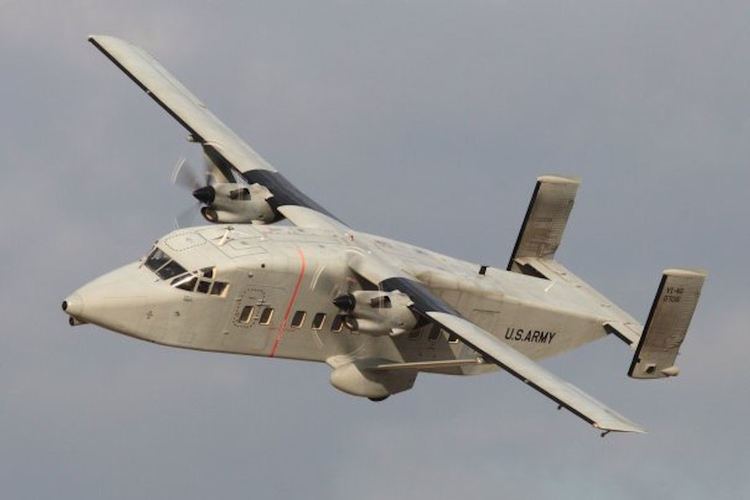
In U.S. military service, the Short 330 was designated C-23A Sherpa. The C-23B Sherpa was similar to the C-23A, but with cabin windows. The C-23B+ Short 360 derivative was created by replacing the rear fuselage of Short 360s obtained on the second-hand market with the twin tail and rear loading ramp of the Short Sherpa.
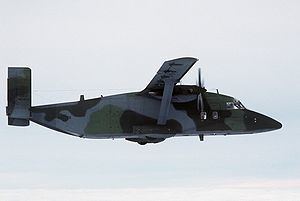
The C-23 was produced at the Short Brothers' facility in Belfast, Northern Ireland for the U.S. Dept. of Defense.
U.S. Air Force
The C-23A Sherpa entered service with the United States Air Force in Europe in 1985 based at Zweibrücken Air Base. It continued in use in the EDSA role until November 1990 with the post-cold war force reductions. All the Sherpas were returned to the United States; three aircraft were given to the USAF Test Pilot School at Edwards AFB, eight aircraft were given to the U.S. Army and the remaining seven to the United States Forest Service. The Test Pilot School aircraft were retired in 1997.
U.S. Army
The eight former USAF aircraft were used for test duties at different units; two were re-designated as JC-23A.
The Army purchased four civil Short 330 aircraft to replace the DHC C-7 Caribou being used to support the Kwajalein Missile Range. These were not given a C-23 designation, and were retired in 1992. In 1988, the Army ordered ten new-build Short 330s designated C-23B to replace the DHC C-7 Caribou used by the U.S. Army National Guard Aviation and Repair Activity Depots. In 1990, a further six were ordered.
When the Army wanted 20 more C-23s in 1990 the production line had closed; second-hand Short 360 aircraft were purchased instead. Designated the C-23B+, these were modified from the original single tail to the twin-tail and cargo ramp of the other C-23Bs. In 1994, another eight aircraft were converted to replace the DHC UV-18 Twin Otters used in Alaska.
During Iraq War (2003–2011), the C-23 served the Army's intra-theater needs of cargo and personnel transport. It provided an economic alternative for transporting some 20 people or three pallets of cargo when speed was not critical.
As part of the U.S. Army's Constant Hawk intelligence gathering program, five Short 360s were modified for use in Iraq and flew in theater between 2006 and 2011. A further two modified aircraft collided in mid-air before delivery to Iraq. The Constant Hawk aircraft were not given a military designation.
On 13 June 2007, the Alenia C-27J was selected to replace the C-23 in U.S. Army service. A total of 43 C-23s were in service with the U.S. Army as of November 2008. The C-23 Sherpa was retired from the Army National Guard in January 2014. As part of the National Defense Authorization Act for Fiscal Year 2014, 8 C-23s may be transferred to the State of Alaska to operate from short rural runways for search-and-rescue and medium-lift missions.
In December 2014, it was announced that US would supply eight aircraft to Estonia, Djibouti, and Philippines.
Civilian and Air National Guard service
Several surplus aircraft were sold to US operators, who used them to transport equipment and crews to remote work sites. Others were used by Air National Guard units in the various US states.
On 3 March 2001, a C-23B Sherpa belonging to the 171st Aviation Regiment of the Florida Army National Guard was carrying 18 construction workers from Hurlburt Field (Florida) to Naval Air Station Oceana (Virginia). The pilot left the flight deck to use the aft bathroom. His weight in the tailcone shifted the center of gravity sufficiently (later calculations determined that the aircraft had been loaded outside its operating envelope at the start of the flight) that the airplane became unstable when a patch of severe turbulence was encountered. The violent g-force shifts then encountered rendered the crew unconscious and caused the breakup of the aircraft in flight near Unadilla, Georgia, killing the 21 persons on board.
Variants
Civil operators
Former USAF and US Army aircraft have been sold to civil operators including:
Aircraft on display
C-23A
Data from Jane's All the World's Aircraft, 1988–1989
General characteristics
Performance
C-23B/C
Data from U.S. Army Aircraft Since 1947
General characteristics
Performance
